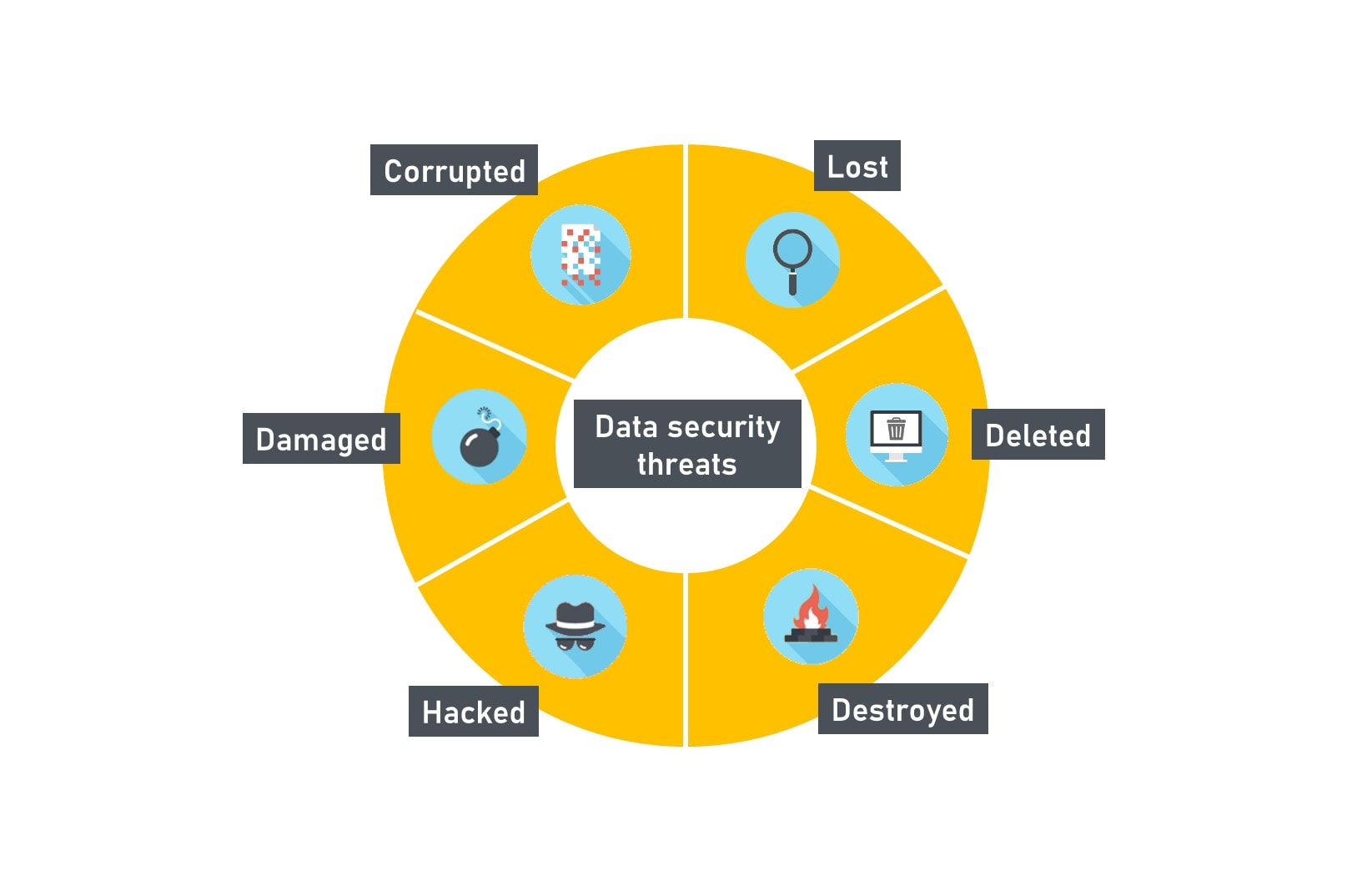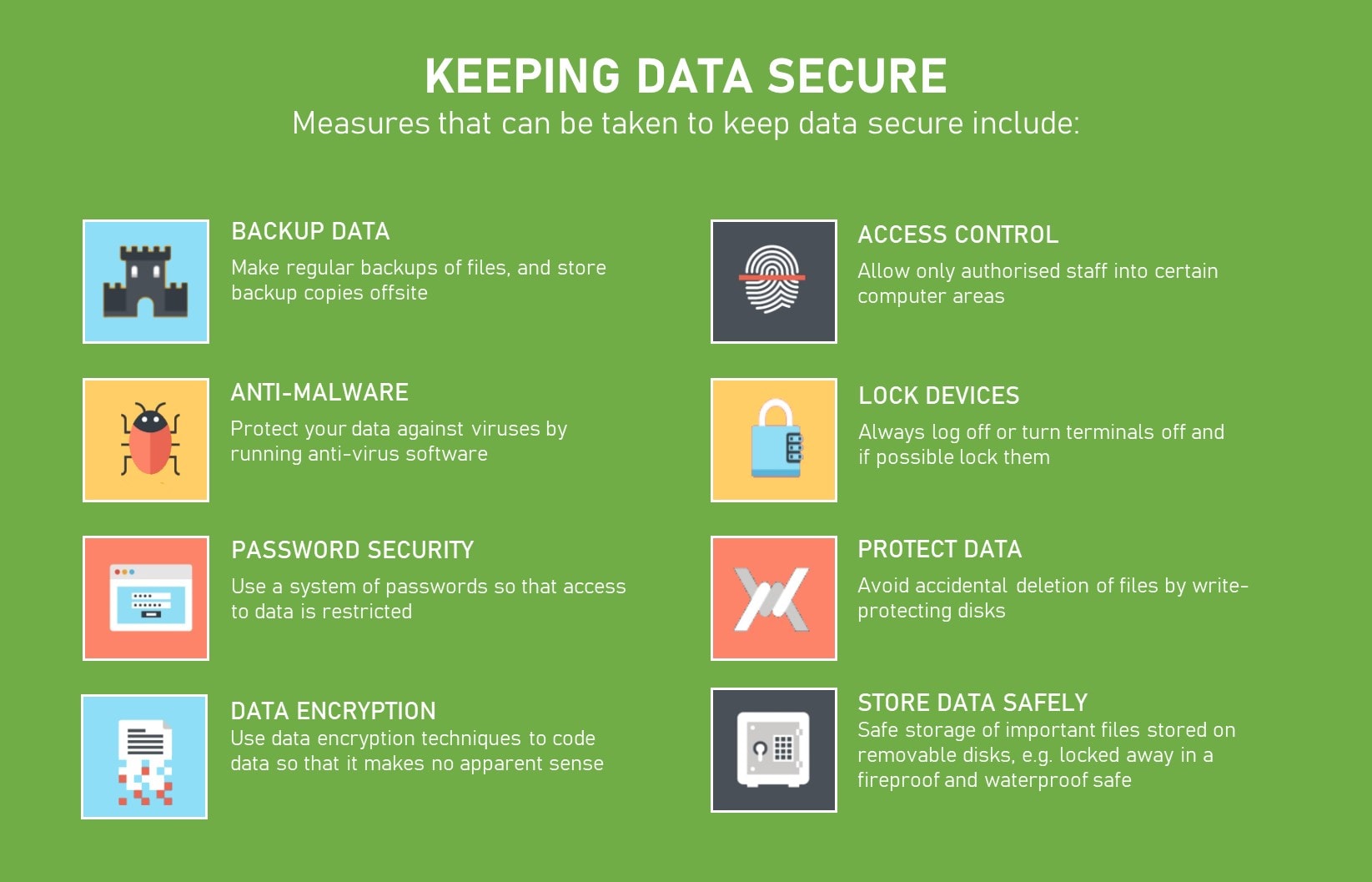Data Loss Prevention (DLP) Best Practices to Strengthen Your Data Security

Almost every organization needs to follow data loss prevention best practices to prevent unauthorized users from accessing and deleting data. Many government and industry regulations exist to secure sensitive data, such as PCI-DSS and health care information (HIPPA). When you ignore these regulations, and a data breach occurs, you must pay substantial fines. Data loss prevention involves using policies and technologies to protect sensitive, valuable, and regulated data like financial, medical records, and intellectual property.
On this page:
What is DLP?
Data loss prevention (DLP) is an approach for safeguarding sensitive company data and information against data breaches or unintentional compromise of sensitive data. DLP identifies, classifies, and tracks private data throughout the company with disclosure policies, avoiding unlawful data disclosure. When a user gains unauthorized access to sensitive information, data loss occurs. Data Loss Prevention is a collection of technologies and practices designed to keep data safe.
Why is Data Loss Protection needed?
Most of the time, data is dynamic – it flows in and out to customers, partners, legitimate users, remote employees and is sometimes accessed by unauthorized people. Many organizations that don’t follow data loss prevention best practices find it challenging to track their data. One primary reason is that employees use different communication channels to send data. These include instant messaging, collaborative software, email, shared online folders, texting, and various social media channels. Moreover, employees may store that data in several locations, such as laptops, desktops, file servers, notebooks, smartphones, the cloud, legacy databases, etc. These practices result in a lack of visibility. It becomes challenging to identify which data is leaving the organization and challenging to prevent data loss. Data loss protection best practices can help improve how a business handles sensitive data and prevent it from getting into the wrong hands. Related: Responding to a Ransomware Attack: The crucial initial steps businesses must take

What are the benefits of establishing a Data Loss Prevention Program?
Any organization that collects, saves, and processes personal information must prioritize data loss prevention. Data volume has increased considerably, raising the likelihood of data loss risks such as unintentional disclosure and theft. The reality is that data breach incidents are wreaking havoc on an unprepared business. Organizations employ extensive data prevention systems to prevent data from falling into the wrong hands. They can benefit from a DLP system in the following ways:
- Monitor both successful and unsuccessful servers, workstations, and network activity. In addition, keep track of who is capturing screenshots, copying, and reading the files
- Control permissions to allow access to sensitive information
- Audit the information flow in and out of the organization, including those from remote locations using mobile devices, laptops, and desktops
- Control and monitor the channels used for information transfer, such as instant messaging apps and flash drives, and where required, block the outgoing data streams
Data Loss Prevention Best Practices
DLP best practices combine process controls, technology, and knowledgeable staff. The following guidelines can help develop an effective DLP program:
Implement a Centralized DLP Program
Many firms use uneven, ad hoc DLP methods and technology that diverse departments and business units implement. This mismatch results in a lack of visibility into data assets and inadequate data security. Furthermore, employees prefer to disregard department DLP programmes that the rest of the corporation does not support.
Evaluate your internal resources
A DLP plan can be created and executed when organizations have experts perform a DLP risk analysis, advise data protection laws, identify data breach response and reporting requirements, and raise employee awareness. Some government regulations require organizations to either employ internal staff or retain external consultants with data protection knowledge. For instance, the GDPR includes provisions that affect organizations that sell goods or services to European Union (EU) consumers or monitor their behavior. The GDPR mandates a data protection officer (DPO) or staff to assume DPO responsibilities. These include conducting compliance audits, monitoring DLP performance, educating employees on compliance requirements, and liaison between the organization and compliance authorities.
Conduct an Inventory Assessment
It is crucial to identify the types of data and their importance for the organization because it’s an essential step in implementing a DLP program. It involves identifying data storage location, data type. It is vital to find whether the data is confidential or sensitive, such as financial information and security data. McAfee DLP can help identify information assets by scanning files’ metadata or sometimes by opening the file to analyze content. In the next step, you analyze the risks associated with data leakage. Moreover, identify the data exit points and impact of data loss on the organization.
Implement in Different Phases
DLP isn’t a single-step process, and the best way to implement DLP is in stages. The best approach is to prioritize communication channels and data types. Implement software modules as required by the organization rather than implementing them all at once. DLP risk analysis and inventory assessment can help establish these priorities.
Create a Data Classification Framework
To successfully create and execute the DLP program, organizations need to create a data classification system for structured and unstructured data. Data security categories include private, confidential, regulated data, personal identifiable information (PII), and intellectual property. DLP products can scan the data and help identify the categories. Moreover, these products speed up the classification process, and humans can easily customize the categories. Content owners can quickly evaluate the different data types that simple phrases can’t identify.
Establish Data Handling Policies
After creating a classification framework, you need to develop policies for handling different data categories. Industries must comply with government regulations for handling sensitive and confidential data. DLP rules use other policies based on various regulations, such as GDPR and HIPPA. DLP staff can customize these regulation policies according to the organization’s needs. DLP products offer channels for monitoring data transfer channels and preventing data breaches. For example, when an employee sends an email containing sensitive data, a pop-up message will appear, suggesting that you need to encrypt data, or the system may block this email.
Employees Awareness
It is essential to educate employees to get the best results out of data loss prevention best practices. You can enhance their ability to follow DLP practices through online training, classes, posters, and periodic emails. Moreover, educate your employees about the penalties and fines for not following the security regulations. For employees training and awareness, the SANS Institute is the best choice.

Next steps: Implementing Data Loss Prevention Best Practices
Data Loss Prevention refers to various methodologies, methods, and instruments to safeguard sensitive data from unauthorized alterations, destruction, sharing, theft, and loss. The success of a DLP program depends on a well-planned DLP strategy and deployment:
- As a first step to developing your DLP strategy, you must identify vital data and how it travels in and out of the environment and from one system to another
- Engage IT and business specialists to examine the data protection strategy to guarantee its viability and sustainability
- Consider how the implementation will affect the culture of the organization
- Consider the hazards of allowing third-party service providers access to your data
By understanding the basic principles and components of DLP, your DLP strategy will lead to establishing a successful program. Such a program will provide governance around data protection for your organization now and for years to come.

